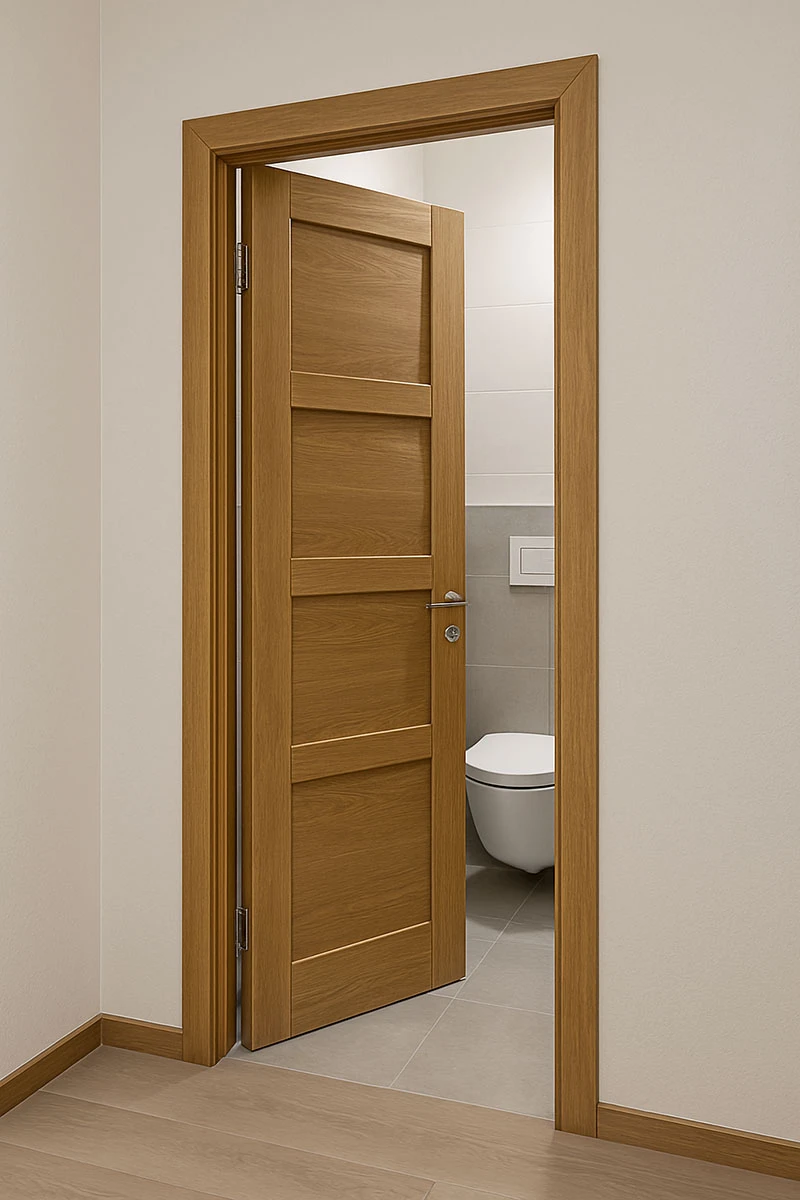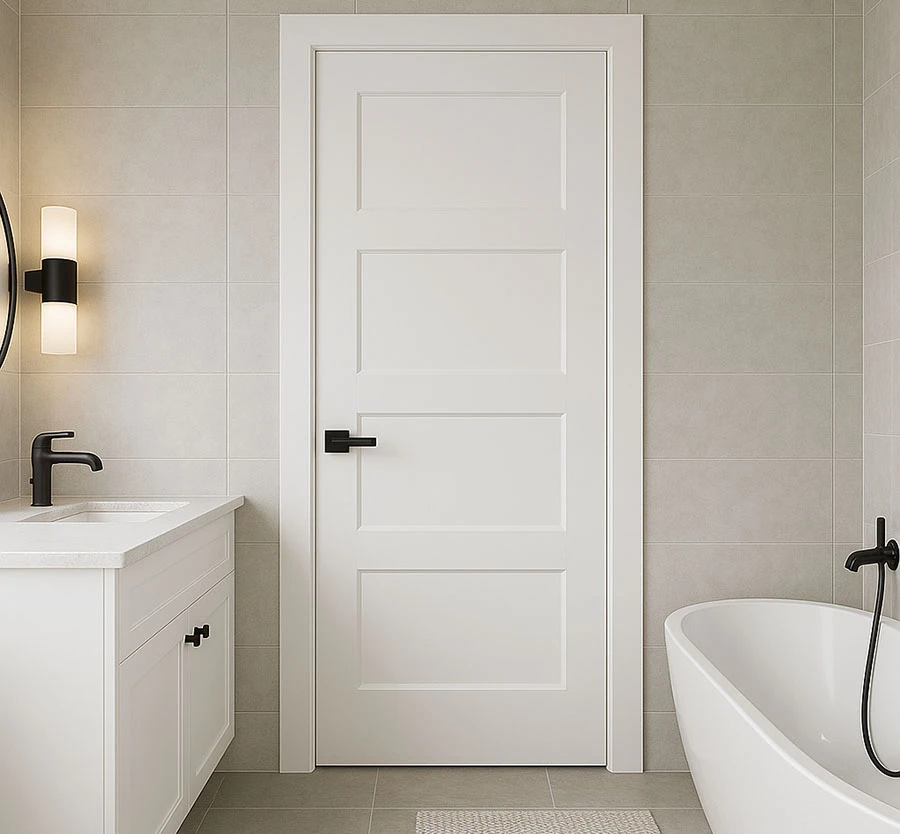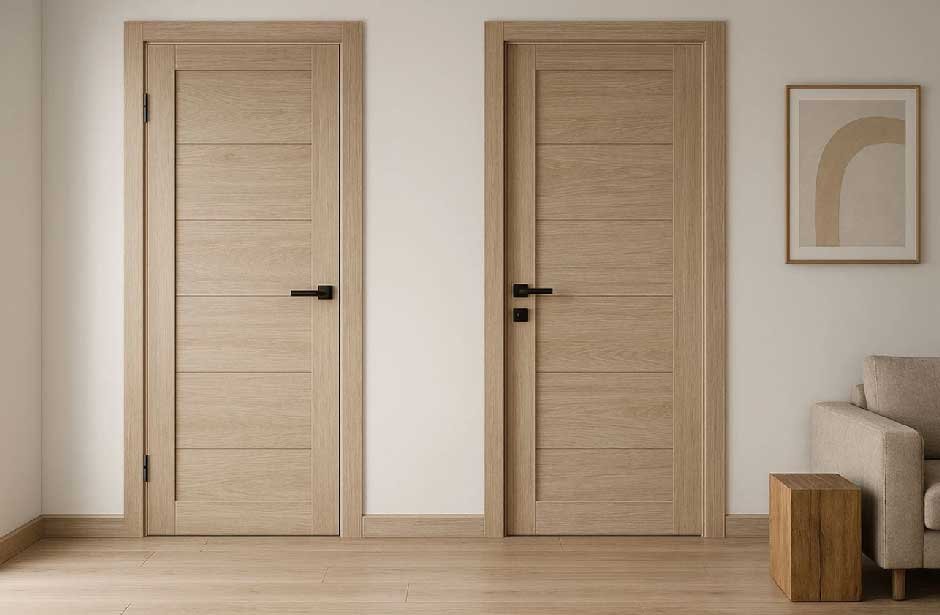Skip to the good bit
ToggleThe bathroom and toilet may be among the smallest spaces in the home, but they are the most personal. These rooms require thoughtful choices — especially when it comes to the door. The right interior door offers privacy, functionality, and visual flow between zones, as shared by Beyond Property Management. And while it may seem like a small decision, it has a big impact on comfort, mood, and style.
If you’re in New York and looking to upgrade your bathroom or toilet doors, explore the premium selection at https://indigodoors.com/new-york/ — from moisture-resistant panels to modern flush designs, you’ll find doors that combine durability with contemporary beauty.
A bathroom door should feel invisible when closed and perfect when opened.
Consider moisture resistance
Bathrooms are moisture-rich zones — and a door that isn’t built to handle humidity will quickly warp, swell, or crack. That’s why the material of your bathroom or toilet door is the first and most important decision. You want something that can stand up to steam, heat, and daily wear — without sacrificing looks.
Materials like PVC, aluminum, or laminated MDF are ideal because they resist moisture without fading or bending over time. Solid wood, while beautiful, needs to be treated and sealed properly. Painted or veneered options work well if used in well-ventilated bathrooms.
Also consider the finish: matte laminates and smooth coatings are easier to clean and maintain, while textured surfaces may trap dust or watermarks.
Moisture doesn’t wait. Choose a door that won’t surrender to it.
Even the most beautiful door must survive a storm of steam every morning.
Prioritize privacy and sound insulation
In the bathroom, peace and privacy are non-negotiable. A thin or poorly sealed door can let sound travel — a common issue in apartments and shared homes. To truly separate this space, your door should offer both acoustic shielding and discretion.
Solid-core doors perform better at blocking noise compared to hollow-core models. To improve privacy even more, add acoustic seals along the frame and a sweep along the bottom. These not only stop sound but also help with insulation and odor control.
If your bathroom is located close to the living room or kitchen, strong soundproofing becomes even more essential. Consider soft-close hinges and magnetic latches for silent entry and exit.

In every flush and faucet, a quiet door brings dignity.
A bathroom door should protect more than space — it protects the silence within.
Focus on space-saving options
Bathrooms are often built into corners, hallways, or tight zones where a traditional door swing may block essential space. Choosing a space-efficient design means more freedom to move, place furniture, or improve layout comfort.
Sliding doors are a top choice. Pocket doors disappear into the wall, offering full functionality without intrusion. Barn doors add charm while staying practical. Bi-fold doors fold neatly to one side — a good fit for compact guest bathrooms or laundry areas.
When installing sliding doors, make sure the track system is smooth, quiet, and mounted with precision. An unstable system can create noise or alignment issues over time.
Small spaces ask for smarter solutions — and your door should follow suit.
A great bathroom door doesn’t take space — it gives it back to you.
Match the design to your interior
Your bathroom door should be part of your home’s design language. It doesn’t have to be a standout element — but it should blend and balance with the aesthetic of nearby rooms. Whether minimalist, rustic, modern, or traditional, consistency makes everything feel intentional.
For modern homes, go with flush doors, minimal hardware, and a clean white or neutral finish. In classic interiors, paneled doors with brass or bronze handles offer timeless elegance. Matte black handles add edge in industrial spaces. For continuity, mirror the tones of the walls, flooring, or cabinetry nearby.
Adding frosted glass inserts can modernize a classic door, while hidden frames (frameless doors) work well in ultra-minimal interiors. Just make sure privacy isn’t compromised.

Your bathroom may be private, but its door is part of the public narrative.
Let your door speak softly in the same language as the rest of your home.
Don’t forget ventilation
Ventilation is often overlooked — but it’s a critical factor in bathroom design. Without proper airflow, moisture builds up, leading to mold, mildew, and that unpleasant damp smell. Your door can help maintain freshness by integrating ventilation in subtle ways.
Vent grilles at the bottom allow air to circulate without affecting privacy. Decorative cutouts or under-door gaps (usually 0.5–1 inch) can also encourage natural ventilation. If your bathroom doesn’t have windows, consider pairing a ventilated door with a mechanical exhaust fan for maximum airflow.
A well-ventilated space is easier to clean, smells better, and feels fresher. And your door plays a role in that — even when it’s closed.
Fresh air belongs in every corner, even the quietest ones.
Sometimes, the best bathroom door knows how to breathe with the room.
When to choose glass doors
Glass may seem like a bold choice for bathroom or toilet doors — but when used correctly, it creates a sense of air, elegance, and light. It works especially well in master suites, spa-style bathrooms, or where light is limited.
Use frosted, sandblasted, or reeded glass to ensure privacy while allowing light through. Framed glass doors with metal edges look sharp in modern or industrial spaces. Frameless glass doors create seamless flow in open-concept homes.
Never use clear glass for shared bathrooms unless it’s strictly for shower zones or interior dividers in en-suite designs. Always balance transparency with respect for privacy.
Glass is light in physical form — but heavy in impression.
A well-chosen glass door brings daylight in and lets your bathroom feel like part of your home’s design, not just a utility.
Function meets feeling
The best bathroom and toilet doors are invisible in their success. You don’t notice them because they simply do their job: they open quietly, close securely, and age gracefully. But behind that quiet confidence is a set of thoughtful decisions — about material, structure, color, and function.
To make the right choice:
- Pick materials that resist moisture over time
- Ensure soundproofing for shared spaces
- Opt for sliding or folding designs where space is limited
- Align finishes and hardware with your interior style
- Integrate ventilation for health and freshness
- Use glass with care and only where privacy is protected
The perfect door doesn’t just connect spaces — it completes them.
Your bathroom door is the last thing you close at night and the first thing you open in the morning. Make sure it’s chosen with care.







